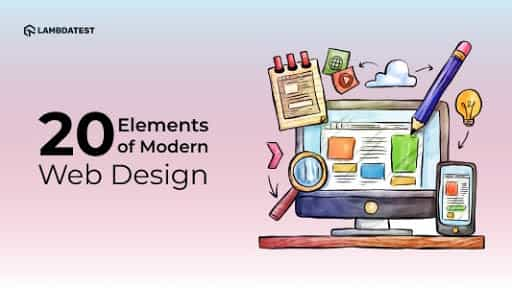All Categories
Featured
Table of Contents
- – Google Web Designer - Home Tips and Tricks:
- – Top Web Design Courses Online - Updated [Apri...
- – Awwwards - Website Awards - Best Web Design T...
- – Collaborate & Create Amazing Graphic Design F...
- – What Is Web Design, How To Do It Right And Be...
- – Beginner's Guide: How To Learn Web Design At ...
- – Web Design Tutorials By Envato Tuts+ Tips an...
- – Top Web Design Courses Online - Updated [Apr...
- – Lifted Logic: Web Design In Kansas City - Se...
- – 10 Good Deeds In Web Design - Nielsen Norma...
- – Web Designer: Learn The 9 Skills You Need I...
- – Google Web Designer - Home Tips and Tricks:
- – Learn Web Design With Online Courses, Class...
Google Web Designer - Home Tips and Tricks:
Desktop apps require designers to develop their design and send it to an advancement team who can then transform the style to code. Usually, this is the standard for large and/or complicated sites due to the fact that it allows the designer to focus on the overall appearance and feel, while all the technical difficulties are moved to the advancement group
Top Web Design Courses Online - Updated [April 2022] - Udemy Tips and Tricks:

Incredible styles can interact a lot of details in simply a few seconds. This is made possible with the use of powerful images and icons. A quick Google search for stock images and icons will create thousands of options.
Awwwards - Website Awards - Best Web Design Trends Tips and Tricks:
Your website visitors have several ways of interacting with your website depending upon their gadget (scrolling, clicking, typing, and so on). The best site designs streamline these interactions to provide the user the sense that they are in control. Here are a few examples: Never ever auto-play audio or videos, Never ever highlight text unless its clickable Make sure all forms are mobile-friendlyAvoid turn up Avoid scroll-jacking There are lots of web animation techniques that can help your style grab visitor's attention, and permit your visitors to connect with your site by giving feedback.
Collaborate & Create Amazing Graphic Design For Free Tips and Tricks:
Your users must be able to quickly navigate through your website without coming across any structural issues. If users are getting lost while trying to navigate through your site, chances are "crawlers" are too. A spider (or bot) is an automated program that explores your site and can determine its performance.
What Is Web Design, How To Do It Right And Best Skills - Rock ... Tips and Tricks:
Responsive, Comprehending the advantages and disadvantages of adaptive and responsive sites will help you identify which website builder will work best for your site design needs. You may encounter short articles online that discuss an entire bunch of various site style styles (repaired, fixed, fluid, and so on). In today's mobile-centric world, there are just two site designs to use to correctly develop a site: adaptive and responsive.
Beginner's Guide: How To Learn Web Design At Home - Medium Tips and Tricks:

a header) is 25% of its container, that aspect will remain at 25% no matter the modification in screen size. Responsive websites can also use breakpoints to produce a custom look at every screen size, but unlike adaptive sites that adjust only when they hit a breakpoint, responsive websites are constantly altering according to the screen size.(image credit: UX Alpaca)Great experience at every screen size, despite the device type, Responsive website builders are generally stiff that makes the design difficult to "break"Heaps of offered templates to start from, Requires extensive design and screening to ensure quality (when going back to square one)Without accessing the code, customized styles can be challenging, It's crucial to keep in mind that site builders can include both adaptive and responsive features.
Web Design Tutorials By Envato Tuts+ Tips and Tricks:
Wix has been around considering that 2006 and has because established a wide variety of functions and design templates to fit almost every company requirement. Today, it's thought about one of the most convenient tools for novices. Although it's hard to select a winner in this category, here are few things to keep in mind: If you're looking for the most adjustable experience, pick Page, Cloud.
Top Web Design Courses Online - Updated [April 2022] - Udemy Tips and Tricks:
, come into play. Here are some of the pros and cons to think about when looking to embrace one of these tools: Capability to develop custom-made responsive sites without having to write code Unmatched control over every aspect on the page Ability to export code to host somewhere else Intricate tools with steep learning curves Slower style process than adaptive website home builders, E-commerce sites are an essential part of website design.
Lifted Logic: Web Design In Kansas City - Seo - Website ... Tips and Tricks:

The basic 5 components of web style, Best resources to discover web style at house, What is web style? You need to keep your design simple, clean and available, and at the exact same time, usage grid-based designs to keep design items arranged and orderly, thus developing an excellent overall design. Web design online courses.
10 Good Deeds In Web Design - Nielsen Norman Group Tips and Tricks:
, The web design track of Tree, House offers Home hours of video and interactive lessons on HTML, CSS, layouts, and other web design basics.
Web Designer: Learn The 9 Skills You Need In 2022 - Skillcrush Tips and Tricks:
Efficient web design brings a couple of various elements together to promote conversions. These include: Compelling usage of negative space Clearly provided options for the user(the fewer choices the user has, the less likely they are to become overloaded and confused)Obvious, clear calls to action Restricted diversions and a well considered user journey (ie.
Google Web Designer - Home Tips and Tricks:
Here are some examples: Clear calls to action are terrific web design; dirty ones are bad web design. High contrast font styles are wise, efficient web design; low contrast fonts that are difficult to read are poor web design. Non-responsive style.
Learn Web Design With Online Courses, Classes, & Lessons Tips and Tricks:
On a platform like 99designs you can host a design contestby providing a brief and quick designers submit designs based on your specifications. Your web style could cost a couple of hundred to 10s of thousands of dollars, depending on its intricacy. The more information they have, the more equipped they are to provide the ideal web design for you.
Learn more about Lovell Media Group LLC or TrainACETable of Contents
- – Google Web Designer - Home Tips and Tricks:
- – Top Web Design Courses Online - Updated [Apri...
- – Awwwards - Website Awards - Best Web Design T...
- – Collaborate & Create Amazing Graphic Design F...
- – What Is Web Design, How To Do It Right And Be...
- – Beginner's Guide: How To Learn Web Design At ...
- – Web Design Tutorials By Envato Tuts+ Tips an...
- – Top Web Design Courses Online - Updated [Apr...
- – Lifted Logic: Web Design In Kansas City - Se...
- – 10 Good Deeds In Web Design - Nielsen Norma...
- – Web Designer: Learn The 9 Skills You Need I...
- – Google Web Designer - Home Tips and Tricks:
- – Learn Web Design With Online Courses, Class...
Latest Posts
Lifted Logic: Web Design In Kansas City - Seo - Website ... Tips and Tricks:
Learning Web Design: A Beginner's Guide To Html, Css ... Tips and Tricks:
Top Web Design Companies - Find Web Designers Here Tips and Tricks:
More
Latest Posts
Lifted Logic: Web Design In Kansas City - Seo - Website ... Tips and Tricks:
Learning Web Design: A Beginner's Guide To Html, Css ... Tips and Tricks:
Top Web Design Companies - Find Web Designers Here Tips and Tricks: